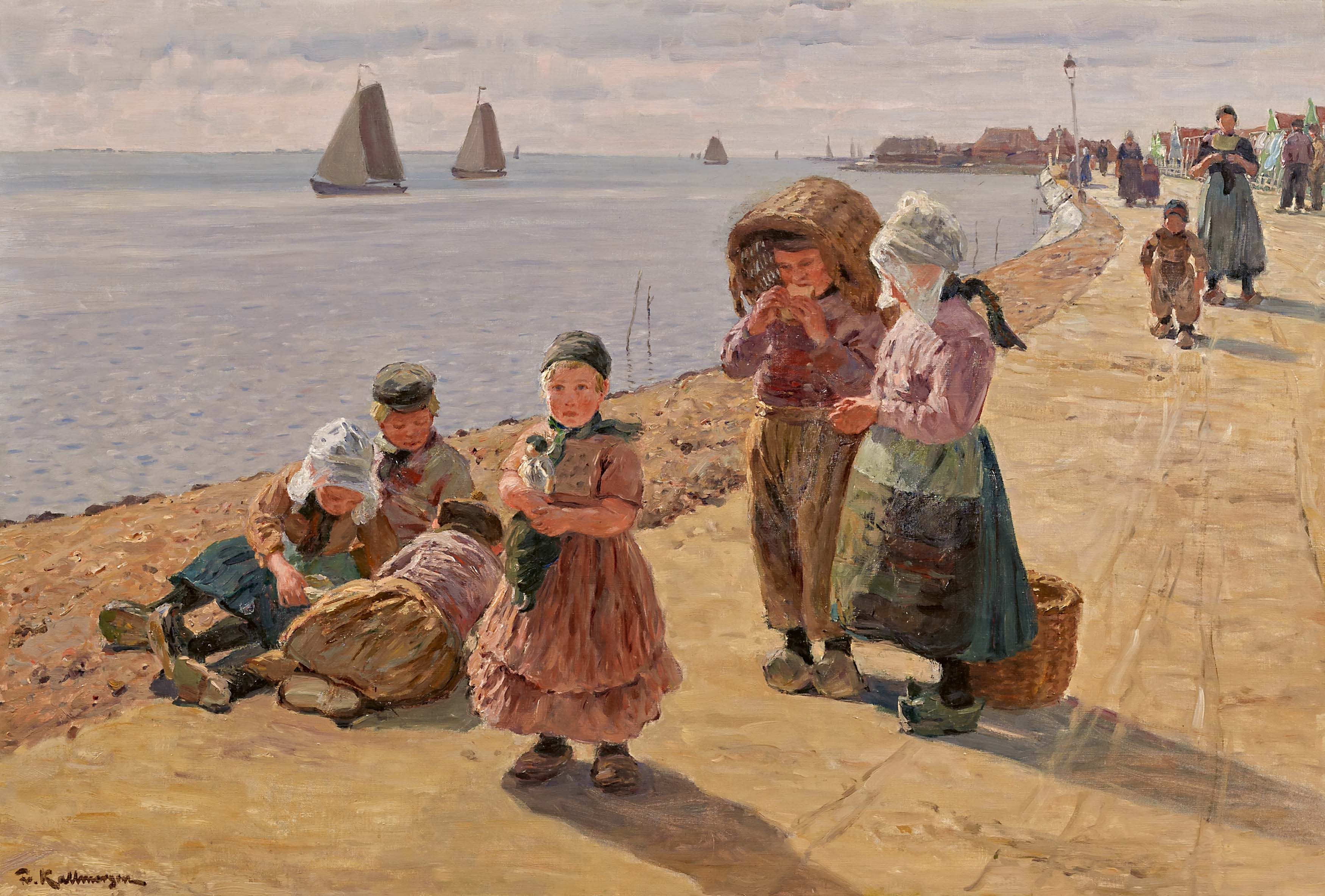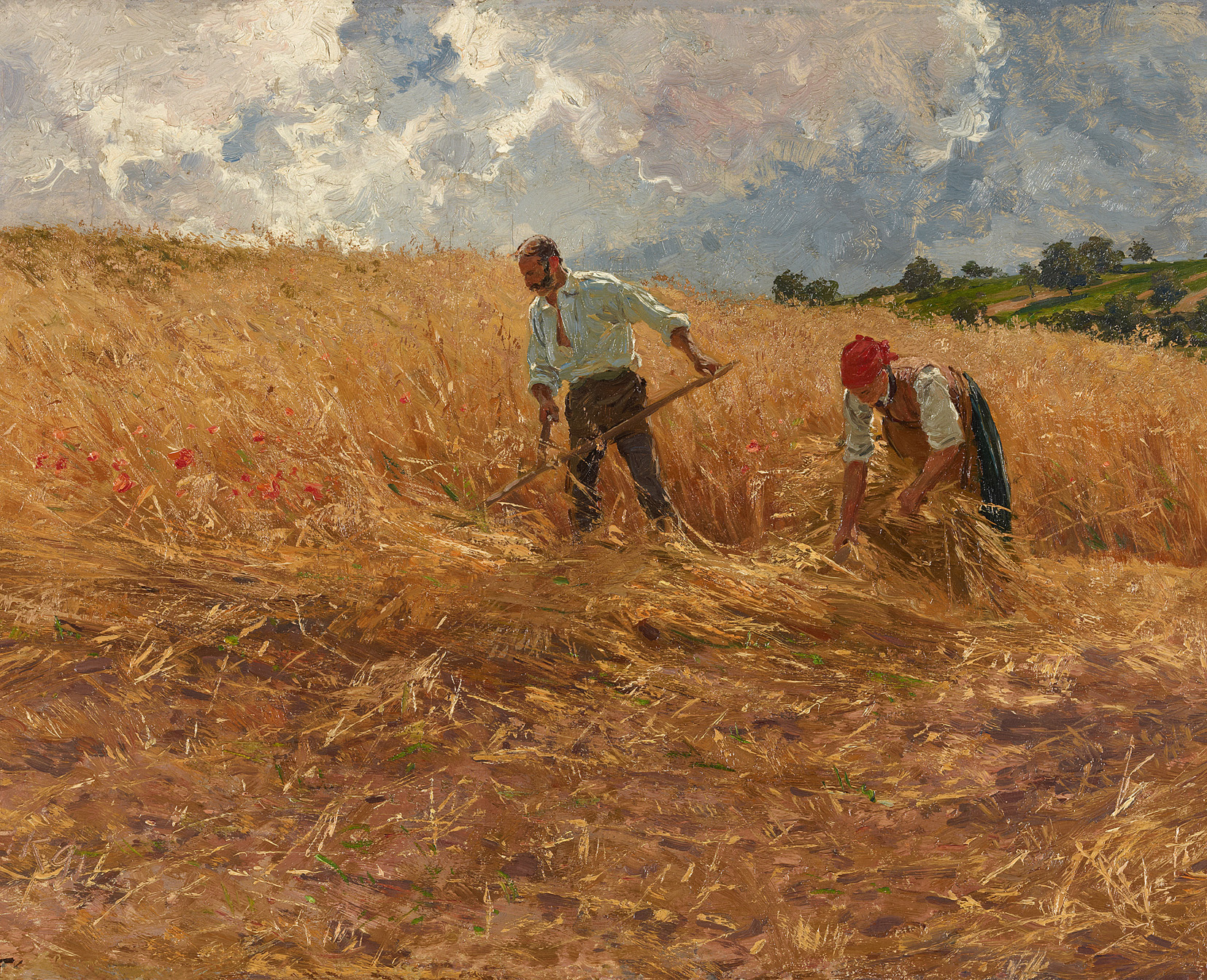Friedrich Kallmorgen (1856-1924) was a celebrated German painter who specialised in Impressionist paintings, famous for his stunning landscapes and cityscapes. Born into an artistic family, his father was an architect, and his uncle, Theodor Kuchel, was a portrait and landscape painter who gave him his first art lessons in 1862.
Inspired by a study trip to Franconian Switzerland with artist Carl Friedrich Lessing, he later joined the Academy of Fine Arts in Karlsruhe. There, he trained with Ernst Hildebrand and Hans Fredrik Gude, both of whom deeply influenced his artistic style.
In 1889, Kallmorgen helped establish the Grötzingen artists’ colony, a community for artists in Karlsruhe. His reputation grew further when, in 1891, Frederick I, Grand Duke of Baden, appointed him a professor. In the 1890s, he also created collectible artwork for Stollwerck chocolate, with his 1899 series on Italian folk songs gaining popularity.
In 1901, he began teaching landscape painting at the Berlin University of the Arts, succeeding Eugen Bracht. His work earned him numerous accolades, including a gold medal at the Große Berliner Kunstausstellung in 1908. Kallmorgen continued to travel extensively, visiting places like Norway and Russia, until he eventually returned to the artists’ colony near Karlsruhe, where he spent his final years and passed away.



































0 Comments